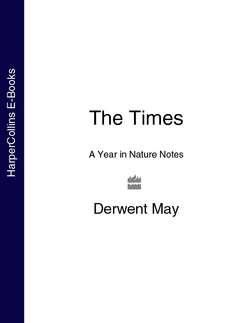Читать книгу The Times A Year in Nature Notes - Derwent May - Страница 42
5th February
ОглавлениеROOKS ARE BACK in their treetop rookeries, beginning to prod at their nests and rearrange the sticks still left from last year. But they will not start serious rebuilding for a while yet, and will lay their eggs in March. It was always said that rooks went around in flocks while crows were solitary birds, but since carrion crows have grown more common, flocks of young birds are often seen feeding together. Rooks are best distinguished by the bare, whitish skin at the base of their beaks, but crows’ beaks can also glint and look white when they are wet and the light catches them. Rooks in flight can sometimes be recognised by their deep, relaxed-looking wing strokes and the more ragged ‘fingers’ at their wing-tips, compared with the crow’s tidier wings and more plodding flight. They also have a yelping kind of caw that is not heard from crows.
In the branches of poplar and apple trees, as the white berries disappear from the mistletoe clumps, small greenish-yellow flowers take their place at the joins between the stalks.
